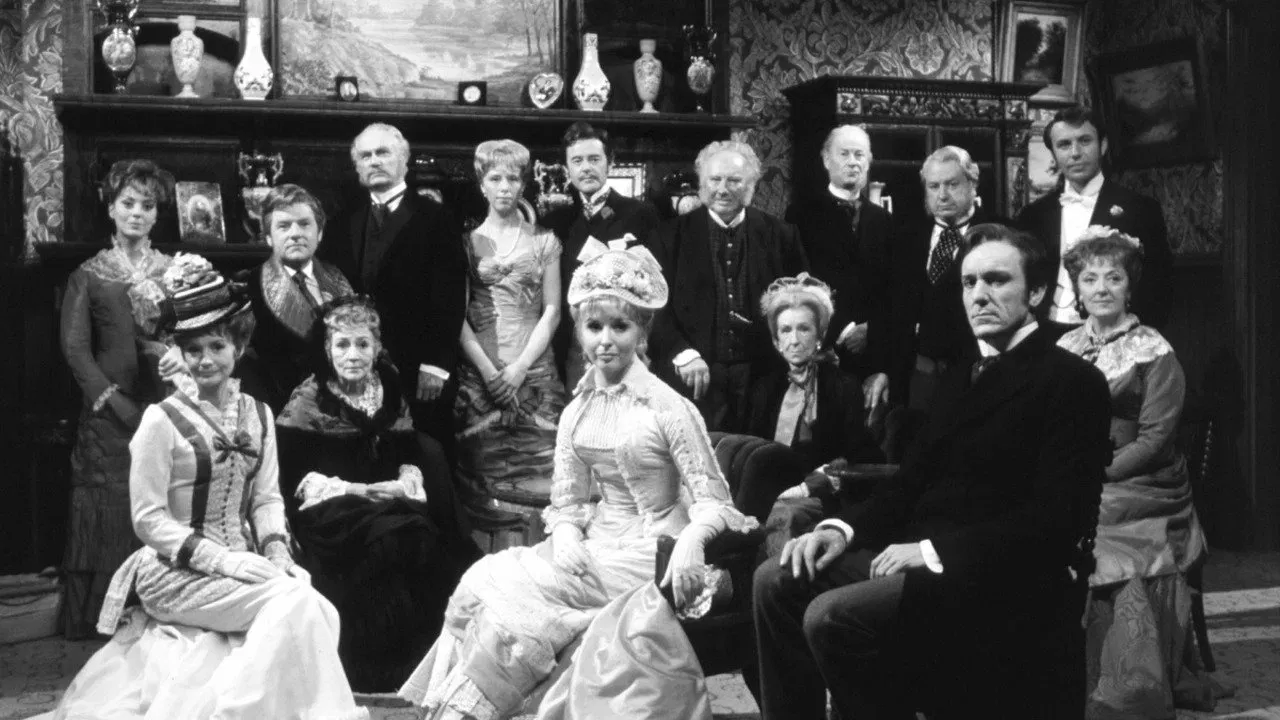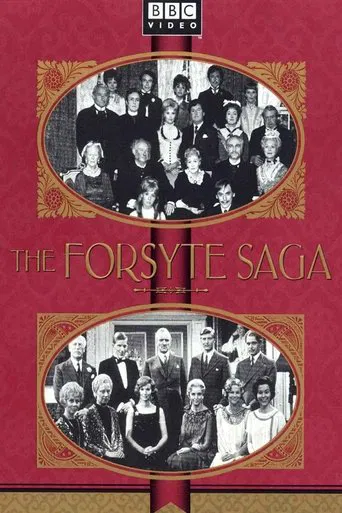

(If you haven't seen the series yet, there is a possible spoiler in this review.)I remember when I first heard that this series was about to air on Television New Zealand. In 1967 I was 22 and not at all interested in TV. I'd never been much interested in movies either. I preferred reading. But this series had the whole family riveted. I remember criticism (from a New Zealand critic) of Nyree Dawn Porter's portrayal of Irene. But I felt she did everything that was required of her, which was mainly to look so ravishing the gaze of all, both male and female, followed her, and to have an air of mystery. She also had to make it plain that she was unaware of the effect she had on others. Irene could have chosen any man she wanted, but unfortunately Soames Forsyte saw to it that no other man could get near her. And she was so naive and innocent she didn't realise how dangerous it was to marry a man whose very proximity made her flinch and shudder. Her stepmother wouldn't have cared to enlighten her either; she just wanted rid of the girl, and Soames was, to all intents and purposes, a very good catch.I feel this series is, on the whole, much better than the remake. The only improvement in the remake was Bosinney, played by Ioan Gruffud. I'd have fallen for a Bosinney who looked like Gruffud, but I never could believe in Irene (or June) falling for John Bennett. Neither could I believe that all eyes would follow an Irene who looked like Gina McKee. There is nothing wrong with McKee's looks; she just isn't outstandingly beautiful enough for the part. Neither did she have the air of mystery that was so much a part of Nyree Dawn Porter's appeal as Irene.Apart from a miscast Bosinney, I also felt the 1967 series was badly let down by its portrayal of the rape scene. In the books Irene was in bed asleep and therefore more helpless than portrayed in the 1967 series. At least the 2001 didn't make this very grave error.Eric Porter as Soames was absolutely brilliant; an act that nobody, regardless of his acting skills, could hope to match, never mind outdo. While Porter managed to convey Soames's coldness, he also grabbed viewers' sympathies. That's no mean achievement.Finally, I have to express my disappointment that this series is in black and white. I saw it in black and white, because that's all New Zealand television had at the time, but I didn't realise it wasn't filmed in colour. I probably received the impression it was filmed in colour because of a colour photograph of Irene on the cover of The Listener.
... View More'The Forsyte Saga', made in 1967, and one of the last programmes to be filmed in black and white, is part of television legend. On its first showing in the UK it gripped the nation and even made a recorded impact on the National Grid (one which has been a benchmark ever since).Based on a series of books by John Galsworthy, and set over a period of more than 30 years, the tale follows a family of property, the Forsytes, and their trials and tribulations during the Victorian age, the Edwardian age, the First World War, the Great Strike of 1926, and other milestones. It covers new industry, the art world, the smart set, the world of politics and boardrooms, the legal profession, and the status of servants, all in a bottom-numbing 26 hours, should you watch it all in one go.Beautifully scripted and directed, and daring not just for its own time but in all television (with Soames rape of Irene), this finely cast drama lives up to its well-deserved reputation. Kenneth More as Jo and Eric Porter as Soames stand out in a cast who complement each other perfectly. There are no wrong notes and no weak moments throughout the saga.As regards Galsworthy's books, the writers do an admirable job of filling them out with appropriate dialogue and in setting the scene so perfectly you can almost imagine yourself in middle-class England when people still stood for the Queen and refused to serve a court notice on a woman. In the three generations of the central Forsyte branch (old Jolyon, Jo, and his sons Jolly and Jon) we see a changing world with changing priorities ... while in the relationship between Soames and Irene we get a chance to feel sympathy, empathy, and change our perspective as the series progresses.A wonderful series, presented on DVD in a beautiful transfer with lots of extras from the time (such as Cliff Michelmore on 'Talkback' and sections from 'Late Night Line Up').
... View MoreI totally agree with all the previous viewers who lauded this original television masterpiece which gave birth to the many great mini-series that followed. The recent 2002 color version pales in comparison. How can anyone even attempt to replicate the brilliant performances of Eric Porter, Nyree Dawn Porter, Kenneth More and Margaret Tyzack in the original. Eric Porter well earned his Best Actor BAFTA award as Soames Forsyte and I found Damien Lewis' red haired, smirking Soames portrayal in the recent version irritating. What can you say about the enduring beauty, radiance and performance of Nyree Dawn Porter as everyone's Irene. I felt sorry for poor Gina McKee trying to even attempt to equal the original and quintessential Irene. The two unrelated Porters will always be remembered as Soames and Irene. My only quarrel, a minor one, is the strange disappearance of two rather important characters. Annette, Soames second wife, who is never seen in the final episodes, either at her daughter Fleur's wedding or at the birth of her grandchild. The grandson Kit, is never seen after his birth. He was often mentioned but never seen. I urge everyone who have only seen the 2002 version to look in on the original. The DVD contains many excellent special features including critical debate (Soames vs Irene), cast comments and public reaction.
... View MoreThe Forsyte Saga" was a vast undertaking for the British Film Industry when it was first created. It ran 26 weeks and virtually may be said to have launched the TV-miniseries genre, since "Masterpiece Theater" was brought into being to exhibit it. The series was based on the three sets of social novels by observer and trenchant author John Galsworthy. The saga is set before the turn of the 20th century; and, it must be remembered, it is about the British Empire, a corrupt political system whose leaders were every bit as incapable of good government as the empire of Rome's leaders were before them. The lives of those we see, the numerous Forsyte clan, are the products not of capitalism but of mixed-capitalism, government-connected de facto "tsars"-of-privilege-or-favor and those with whom they do business, exactly as is the U.S. empire of post 1994, for instance. The series focuses for the first 15 episodes upon the pentangle of actions undertaken by Soames Forsyte, the eponymous "Man of Property" of one of the author's novels. His wife is Irene Heron Forsyte, who falls in love with architect Philip Bosinney, builder of the couple's new home. Soames sets out to ruin the man when he finds out about the attachment; and when a distraught Bosinney is run over in a London street, Irene takes up with Jolyon, the black sheep of the Forsyte family who had made a mistress of the nanny he had employed. The fifth member of the pentangle is Fleur, flapper daughter of Soames and his next wife, who is madly in love with Jolyon and Irene's son, but marries instead for wealth. The proceedings in this long, very-well produced and rather well-acted epic have been nominated as 'melodrama'; they are nothing of the sort. This handsome production is a drama, a bit sluggish at times but always interesting since it is written about folk who very strongly either understand individualism or do not, understand justice or do not, understand equality of human beings or do not. The point of the entire proceeding is that the human virtues--true inward beauty, intelligence, incorruptible honesty, imagination and sympathy are NOT the possessions of any ruling class smug in its self-importance but lacking in anything except pride in its own narrow-mindedness, bigotries and piled-up possessions. The production designs by Spencer Chapman, Raymond Cuscik and Sally Hulke has a muted stylistic charm I find, but cannot compare in my opinion with that accorded the beautifully-mounted 1949 feature film "That Forsyte Woman". Lennox Phillips and Donald Wilson get the credit for the interesting adaptation of Galsworthy's huge novels and for dividing them into 26 intelligible episodes. James Cellan Jones and David Giles directed the long piece with what seems to most observers to be consistent intelligence. The sound recording, following the British practice of recording live voices, is sometimes uneven; and the production's other values such as lighting, costumes and art direction are seldom memorably good abut never less-than-adequate. The earlier half of the saga is more idea-level to me as a writer, but the later segments are period pieces in their own right. Among the actors, Eric Porter seems to be exactly the sort to play Soames, investing the hollow man with native charisma, canniness and a concentration that makes everyone else look good who acts with him. Nyree Dawn Porter as Irene is no Greer Garson but is attractive and quite adequate to playing a psychologically-normative person, Irene's outstanding quality. Fine actor Kenneth Moore is sympathetic as Jolyon, Susan Hampshire dynamic and vivid as Fleur. Other standouts include Joseph O'Conor as Old Jolyon, Margaret Tyzack as Winifred, Caroline Blakiston as Marjorie Ferrar and a number of others in less-lengthy roles among the older generation. Those who admire this huge project, and I am one of them, regard it is one very difficult to approach in artistic quality let alone to match. It is must watching in the history of film as the first great TV mini-series, as a social drama, and also as an artistic achievement of the first water.
... View More